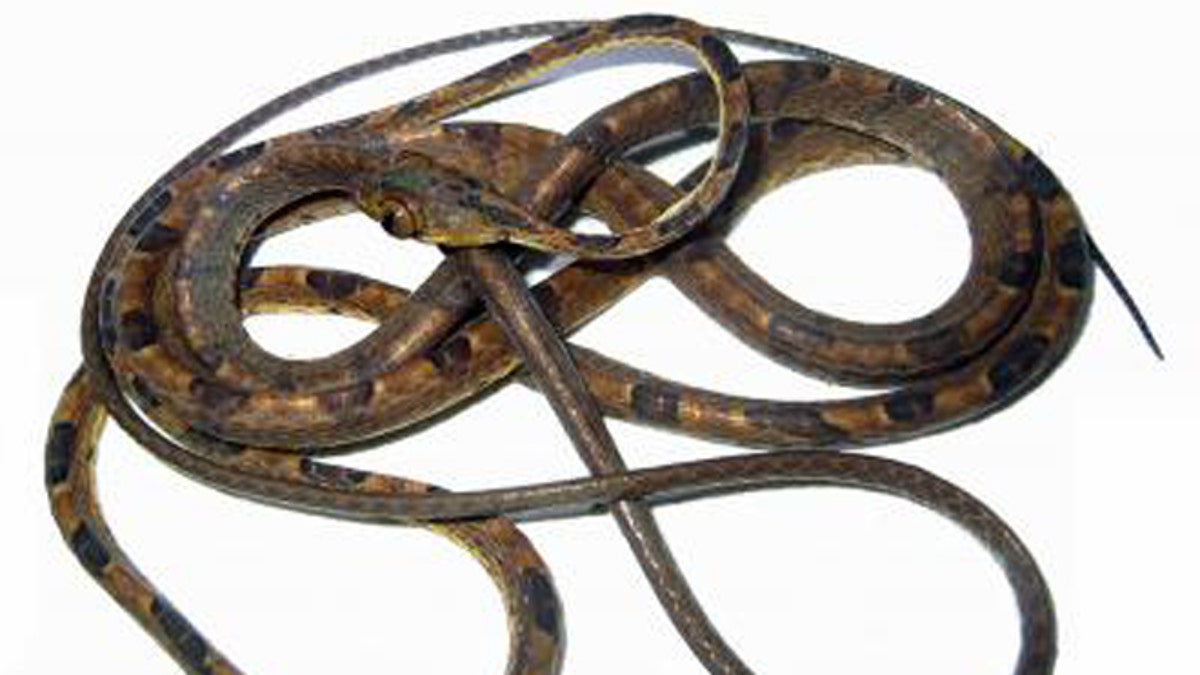
This is a live imantodes chocoensis. Its head is about the size of an American penny. (Omar Torres-Carvajal)
It’s long, thin and bares massive bulging eyes. There’s only been six recognized species of the blunt-headed vine snake genus known as imantodes—until now.
Dr. Omar Torres-Caravajal from Museo de Zoología QCAZ, Pontificia Universidad Católica del Ecuador, as well as a team of zoologists have discovered a new species of the blunt-headed vine snake in the Chocoan forests in northwestern Ecuador. The region is part of Tumbes-Chocó-Magdalena, which is found from the Panama Canal, extending down to western Colombia, Ecuador and northwestern Peru.
This seventh species is a unique find because, according to Torres-Carvajal, DNA data suggests its closest relative is a species inhabiting the Amazon on the other side of the Andes.
“One possible explanation for the disjunct distribution between the new species and its closest relative is that the uplift of the Andes fragmented an ancestral population into, each of which evolved into a different species, one in the Chocó region and the other in the Amazon,” said Torres-Carvajal.
Blunt-headed vine snakes usually live in Mexico and Argentina. What makes them stand out from other snakes is its physical stature—a very thin body, giant eyes, a disproportionately slender neck and its signature blunt head, Blue-headed vine snakes live in trees, hunting frogs and lizards at night. The new species discovered by Torres-Carvajal and his team was named imantodes chocoenis.
Snakes collected as far back as 1994 and deposited in several Ecuadorian and American natural history museums were also examined. The team was surprised to find that some from the Ecuadorian Chocó lacked a big scale on their face that is present in all other blunt-headed vine snakes. DNA evidence indicated the Chocoan snakes belong to a new species.
According to Conservation International, species in the Tumbes-Chocó-Magdalena region continue to decline due to hunting and urbanization. Ecuador’s coastal forests have been reduced to only 2 percent of their original coverage area. The white-wing guan is seriously threatened with extinction.
The study was published in the open access journal ZooKeys.
Follow us on twitter.com/foxnewslatino
Like us at facebook.com/foxnewslatino

